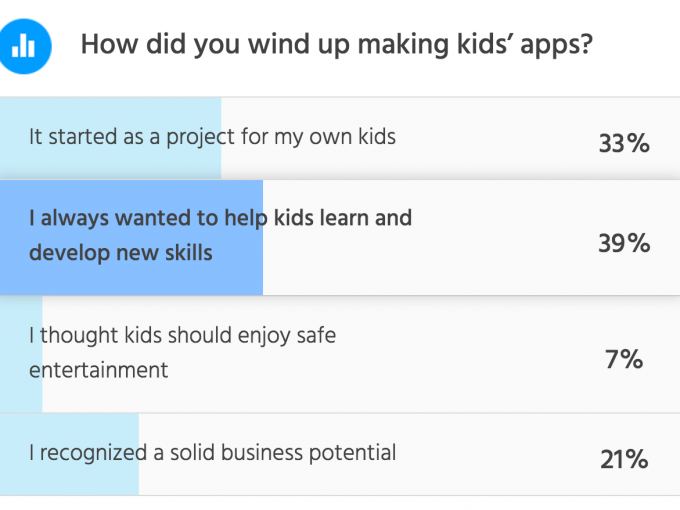According to a recent survey conducted by our team at KIDOZ, an Israel-based content discovery platform, only 21% of children’s app developers said they joined the industry in order to make money. The vast majority of the roughly 50 top kids developers we contacted said they entered the fray to improve the lives of kids (including their own) and provide added value to today’s mobile generation.
But whatever the motivation, all appmakers eventually need to bring home the bacon. The kids app category suffers from a bad reputation when it comes to generating substantial revenue—and it’s oftentimes deserved. However, a solid business model that fits the product, combined with smart tools and technology, can not only generate solid returns for developers, but can also protect young users and enrich app experience.

Must all apps be profitable?
The answer to this question is both yes and no. Not all apps must generate big bucks. For example, a developer can rely on freemium apps to generate traffic to his or her paid apps (and it actually works). In other cases, brands can boost awareness or stickiness by publishing apps, which also contribute to the business as a whole and translate to revenue, even if not directly. But these are not the majority of cases, and mostly the answer is this: apps must generate a return on investment that’s higher than the sum of the costs incurred from development, marketing, personnel and all other expenses.
Do paid models work?
Sometimes. But we do see major differences in user willingness to pay for content. Let’s take Android vs. Apple. While a decent percentage—sometimes up to 15%—of iOS users are willing to pay out-of-pocket for kids apps, a much smaller percentage of Android users do so (usually less than 3%). Paid apps also don’t make up a huge part of the Android Market, and are responsible for only about 10% of the total worldwide revenue in the kids segment.
Paid apps are just one of three popular revenue models, the other two being subscription plans and in-app purchases. All three have issues, making business a little more complicated these days. Paid apps mostly suffer from a low user base (as parents are not inclined to pay for apps they have yet to try), often holding back chances for significant monetization. Subscription models require a large amount of work to maintain an ongoing value, making them a valid approach for well-funded companies only. The in-app purchase model has its own issues as it tends to raise complaints and refund requests from parents, alongside bad reviews on the app store pages.
Which means developers are going hybrid
Let’s say an app is monetizing via in-app purchases, and does so wonderfully. Let’s say three, four or even five percent of users spend money and buy app items. Hooray! Now, what about the other 95% of users? Shouldn’t this huge number of young people enjoying the app affect its revenue stream as well? This is the reason why more and more developers are going hybrid, which means allowing in-app purchases and ads to live side by side in a combined model, enabling them to monetize 100% of their users.
Adophobia exists, but it’s time to move on
I learned that app developers within the kids segment often don’t like the idea of ads or monetization SDKs. The same survey mentioned earlier also indicates that 29% of developers don’t want to hear about ads. At a recent conference, I started to introduce myself to one of the biggest developers in Eastern Europe. As I walked over, I took my hand out of my pocket and reached it out to him. Not only did he not shake it, but when I was a few feet away he just signaled “No” with his hands and said, “No ads, no ads.”
I have much respect for this sentiment. More than that, I admire developers like him for doing what they think is best and healthiest for their audience. But at the same time, I think developers have gone “Adophobic.” They had good reason, since the mobile ad industry has notoriously provided very bad solutions for the kids segment with irrelevant ads and/or inappropriate ones that were actually harmful to both users and brands.

The exciting new era for kids app monetization and brand stories
Today, however, the industry has matured. The concept of advertising is much wider, with units far more friendly and engaging. Classic ads can now be replaced with content discovery experiences, and that is exactly what marks the new step of this evolution: from ads to content, from disruptive to native, from push to experience.
Over the last year, new formats have emerged that allow kids to interact with content and to engage more deeply with monetization entities within apps, which have started replacing classic ads. Having kid-safe relevant promotions is signaling developers around the world that the intrusive ads concept had changed and is now not only legit, but also fun.
Kids brands that seek exposure and engagement within the segment are joining the party, as brand-safe solutions are already available. Since kids spend a great deal of their time with mobile apps, a significant portion of today’s US$17 billion-dollars spent annually by kids’ brands on TV ads will make its way to mobile.






















